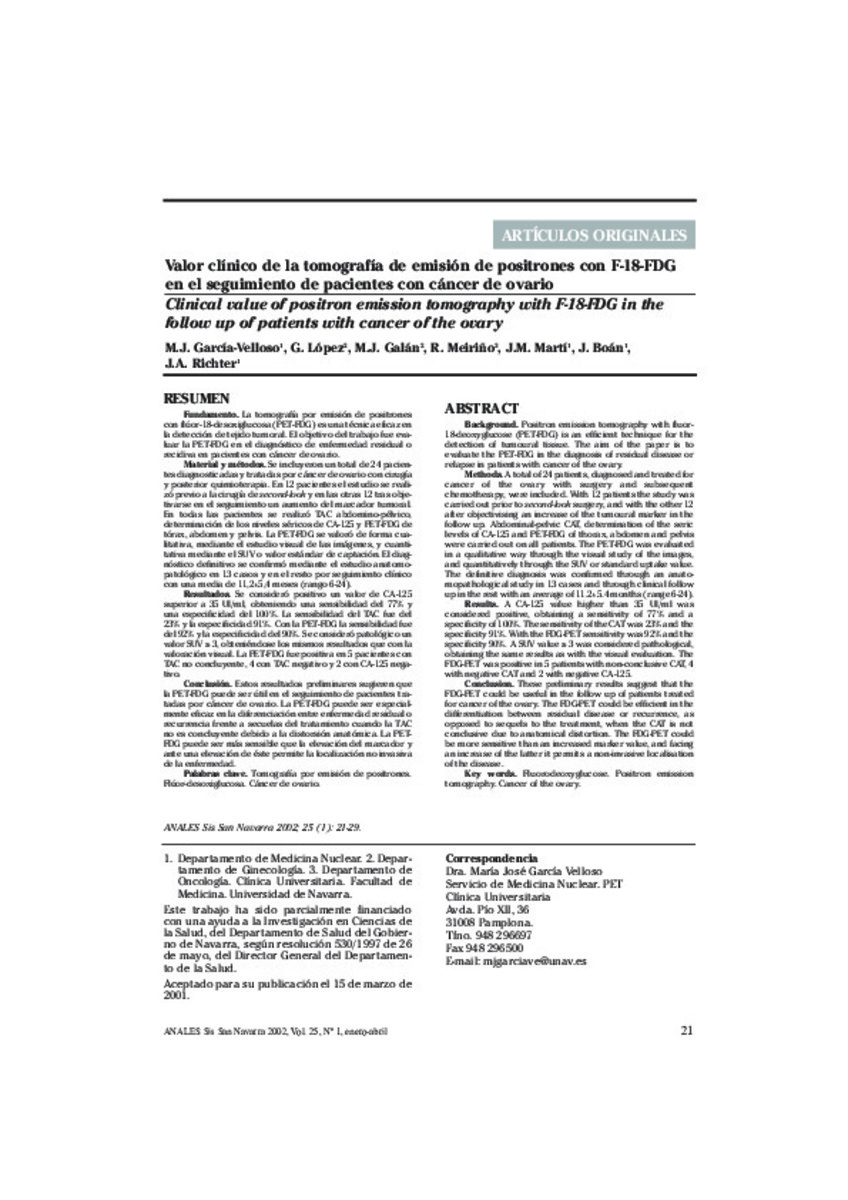Valor clínico de la tomografía de emisión de positrones con F-18-FDG en el seguimiento de pacientes con cáncer de ovario
Other Titles:
Clinical value of positron emission tomography with F-18-FDG in the follow up of patients with cancer of the ovary
Keywords:
Fluorodeoxyglucose
Positron emission tomography
Cancer of the ovary
Publisher:
Gobierno de Navarra. Departamento de Salud
Citation:
Garcia-Velloso MJ, Lopez G, Galan MJ, Meiriño R, Marti JM, Boan J, et al. Valor clínico de la tomografía de emisión de positrones con F-18-FDG en el seguimiento de pacientes con cáncer de ovario. An Sist Sanit Navar 2002 Jan-Apr;25(1):21-29.
Statistics and impact
0 citas en

0 citas en

Items in Dadun are protected by copyright, with all rights reserved, unless otherwise indicated.








